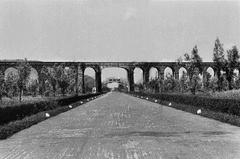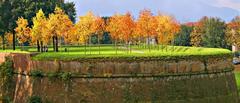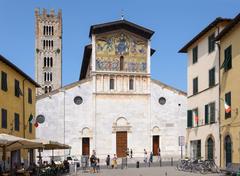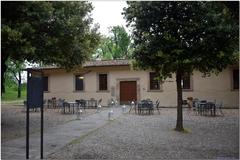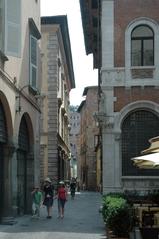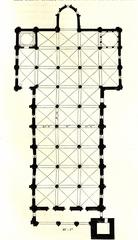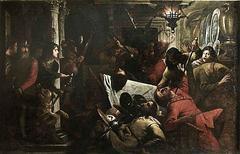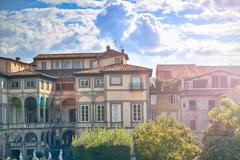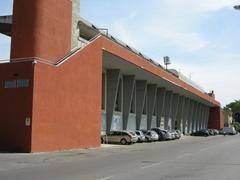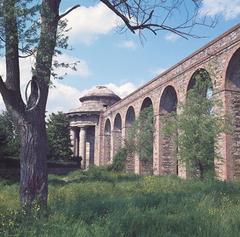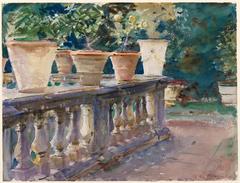Rocca of Nozzano: Visiting Hours, Tickets, and Historical Sites in Lucca, Italy
Date: 14/06/2025
Introduction
Nestled in the captivating Tuscan countryside near Lucca, the Rocca of Nozzano—also known as Nozzano Castle—stands as a remarkable example of medieval military architecture and a symbol of the region’s rich past. Perched above the Serchio River valley, the fortress played a decisive role in the centuries-long rivalry between Lucca and Pisa, acting as both a defensive outpost and a beacon of local resilience. Today, its well-preserved walls and towers draw visitors keen to explore Tuscany’s layered history, picturesque landscapes, and vibrant cultural traditions.
Table of Contents
- The Rocca of Nozzano: An Overview
- Origins and Early History
- Medieval Significance and Architectural Evolution
- Renaissance, Decline, and Preservation
- Defensive Layout and Strategic Position
- Architectural Features: Walls, Towers, and Keep
- Village Integration and Interior Layout
- Materials and Construction Techniques
- Notable Features and Points of Interest
- Visiting the Rocca: Hours, Tickets, and Accessibility
- Special Events and Cultural Experiences
- Nearby Attractions and Travel Tips
- Visitor FAQs
- Essential Contacts and Resources
- Summary and Call to Action
- References
The Rocca of Nozzano: An Overview
Located in the village of Nozzano Castello, just a short distance from Lucca, the Rocca of Nozzano is a quintessential Tuscan fortress. Its imposing stone structures, crenellated towers, and integrated medieval village offer an authentic window into the region’s turbulent past. Over centuries, the castle has been a focal point for defense, community life, and—more recently—cultural revival, making it one of the most intriguing Lucca historical sites (Comune di Lucca, Visit Tuscany).
Origins and Early History
The Rocca’s origins can be traced to at least the 10th century, with significant stone construction commencing in the 12th century. Strategically located along the Via Francigena pilgrimage route and near the Serchio River, the fortress protected Lucca from Pisan incursions and controlled vital economic and military routes (Visit Tuscany). Early phases featured wooden fortifications, later replaced by robust stone walls as the site’s defensive importance grew.
Medieval Significance and Architectural Evolution
During the 13th and 14th centuries, the Rocca underwent expansion, gaining a central keep (mastio), thick curtain walls, and corner towers. Its elliptical and triangular elements maximized defensive capacity, while the clustered village within the walls provided shelter for the local population. The castle saw repeated cycles of destruction and reconstruction, especially during conflicts with Pisa, such as the occupation in 1314. Each reconstruction left visible marks on its architecture (Turismo Lucca, Lucca Musei).
Renaissance, Decline, and Preservation
By the Renaissance, shifting military technologies reduced the Rocca’s strategic value. It gradually transformed into an administrative center and private residence, with interior modifications for comfort. Despite subsequent periods of neglect, major restoration efforts in the late 20th and early 21st centuries have preserved the site, allowing visitors to experience its authentic medieval character (Visit Lucca).
Defensive Layout and Strategic Position
The Rocca is perched atop a rocky outcrop overlooking the Serchio River, providing a commanding view of the valley and key access routes. Its position, in concert with the Rocca di Ripafratta across the river, created a powerful defensive network for Lucca. The elliptical wall circuit and single fortified gateway—protected by a demi-bastion added in 1395—reflect advanced medieval military planning (Castelli Toscani).
Architectural Features: Walls, Towers, and Keep
- Walls: The stone walls, up to 2 meters thick, are crenellated and punctuated by corner towers primarily facing Pisa.
- Keep: The semi-triangular central keep, flanked by a square and a spur tower, served as the final refuge and command center.
- Gatehouse: The only entrance is through a fortified gate facing Lucca, further protected by additional masonry (Tuscany Planet).
Village Integration and Interior Layout
Unlike isolated castles, Nozzano’s fortress envelops the medieval village of Nozzano Castello. The narrow, winding streets and stone houses within the walls retain their medieval character and illustrate the dual role of the site as both a defensive stronghold and center of daily life. The castle’s interiors are functional and austere, consistent with military use, but select restored areas are open to visitors during tours and events (Visit Tuscany).
Materials and Construction Techniques
Local stone from the surrounding hills forms the primary building material. The walls use large, roughly hewn blocks and lime mortar, with thicker bases to resist siege and undermining. Machicolations and battlements provide defensive vantage points, and the gatehouse is reinforced for added protection (Tuscany Planet).
Notable Features and Points of Interest
- Crenellated Walls and Towers: Intact battlements and towers define the skyline.
- Single Access Gate and Demi-bastion: Emphasize strategic defensive priorities.
- Integrated Village: Creates a rare and immersive medieval atmosphere.
- Restored Interiors and Artifacts: Select areas feature medieval pottery and tools, viewable during tours (Turismo Lucca).
Visiting the Rocca: Hours, Tickets, and Accessibility
Visiting Hours
- Exterior: Open access at any time for walks around the fortress and village.
- Interior: Accessible via guided tours or special events; advance booking is required.
Tickets and Booking
- Exterior: Free of charge.
- Interior Tours: Tickets range from €8 to €15 for adults, with discounts for children, seniors, and groups. Book through official tourism websites or by contacting the castle directly (turismo.lucca.it).
Accessibility
- The site’s medieval layout means limited accessibility for wheelchairs and those with mobility issues. The main courtyard and some exhibition areas are accessible; upper levels require stairs. Contact the site in advance for specific needs.
Travel Tips
- Getting There: 8 km from Lucca’s city center; accessible by car, taxi, or public transport (limited).
- Parking: Available near the village entrance.
- Guided Tours: Offered during events or by reservation. Check for availability and languages offered.
Special Events and Cultural Experiences
The Rocca is a focal point for local festivals, most notably the annual “Nozzano Castello Rivive il Medioevo,” featuring medieval reenactments, traditional food, crafts, and music. Periodically, the castle also hosts guided tours, cultural workshops, and photography sessions. Check the official Facebook page for event updates.
Nearby Attractions and Travel Tips
- Lucca’s Historic Center: Renaissance walls, Guinigi Tower, and San Martino Cathedral.
- Rocca di Ripafratta: Pisa’s fortress across the Serchio.
- Garfagnana Castles: Further exploration into Tuscany’s defensive network.
- Serchio River Park: Ideal for nature walks and cycling.
- Local Cuisine: Enjoy Lucchese specialties in village trattorias.
For more inspiration, consult The Crazy Tourist’s guide to Lucca.
Visitor FAQs
Q: What are the Rocca’s visiting hours?
A: The exterior is always accessible. Interior tours are by reservation or during special events.
Q: How can I book tickets for interior tours?
A: Contact the site via phone/WhatsApp (+39 370 1324116), email ([email protected]), or check turismo.lucca.it.
Q: Are guided tours available?
A: Yes, but only during festivals or by advance arrangement.
Q: Is the site accessible for people with mobility issues?
A: Accessibility is limited; inquire ahead for assistance.
Q: What else can I visit nearby?
A: Lucca’s city center, Rocca di Ripafratta, and the Serchio valley.
Essential Contacts and Resources
- Address: Via del Castello, 442, Lucca
- Phone/WhatsApp: +39 370 1324116
- Email: [email protected]
- Official Facebook: Castello di Nozzano
- Tourism Information: turismo.lucca.it
- Visitor Guides: The Crazy Tourist’s guide to Lucca
- Booking and Events: Check official tourism pages and social media for the latest updates.
Summary and Call to Action
The Rocca of Nozzano offers an immersive journey through Tuscany’s medieval history—blending military ingenuity, village life, and living traditions. Its commanding location, distinctive architecture, and vibrant cultural programming make it an essential destination for travelers exploring Lucca historical sites. With straightforward access, flexible visiting hours, and engaging guided experiences, the Rocca is ideal for history enthusiasts, families, and photographers alike.
Plan ahead: Book guided tours in advance, check for upcoming festivals, and use trusted resources like the Audiala app for audio guides and real-time updates. For more information, always refer to official sources (turismo.lucca.it, Tuscany Planet, Comune di Lucca). Embrace the opportunity to discover this medieval treasure and enrich your Tuscan journey.
References
- Rocca of Nozzano: A Historical Gem and Must-Visit Lucca Historical Site – Visiting Hours, Tickets & Travel Tips, 2024, Comune di Lucca
- Exploring Nozzano Castle: Visiting Hours, Tickets, and Lucca Historical Sites, 2024, Visit Tuscany
- Visiting the Rocca of Nozzano: History, Tickets, and Lucca’s Medieval Treasure, 2024, Tuscany Planet
- Rocca of Nozzano Visiting Hours, Tickets, and Guide to Lucca Historical Sites, 2024, Turismo Lucca
- Additional visitor information and historical context, 2024, Toscana.info
- Castelli Toscani
- Lucca Musei
- The Crazy Tourist’s guide to Lucca
- Wikipedia - Nozzano
